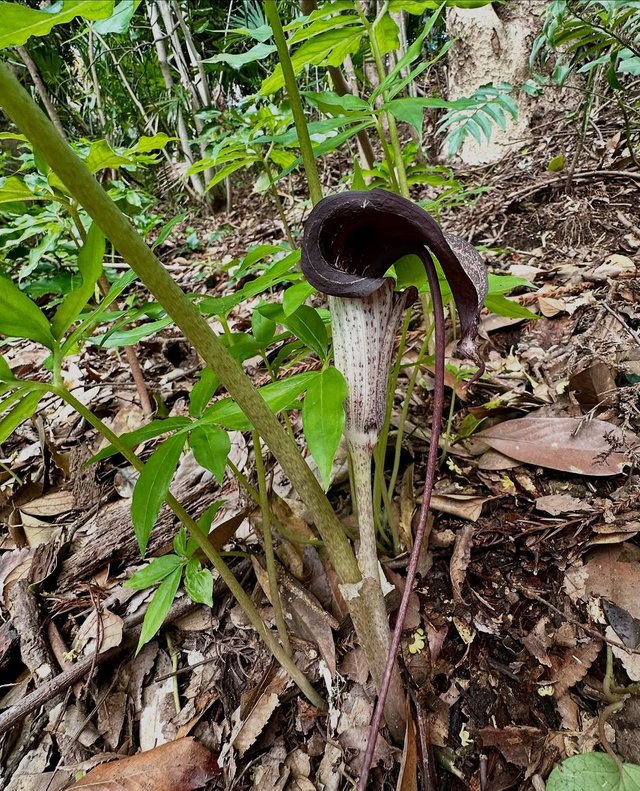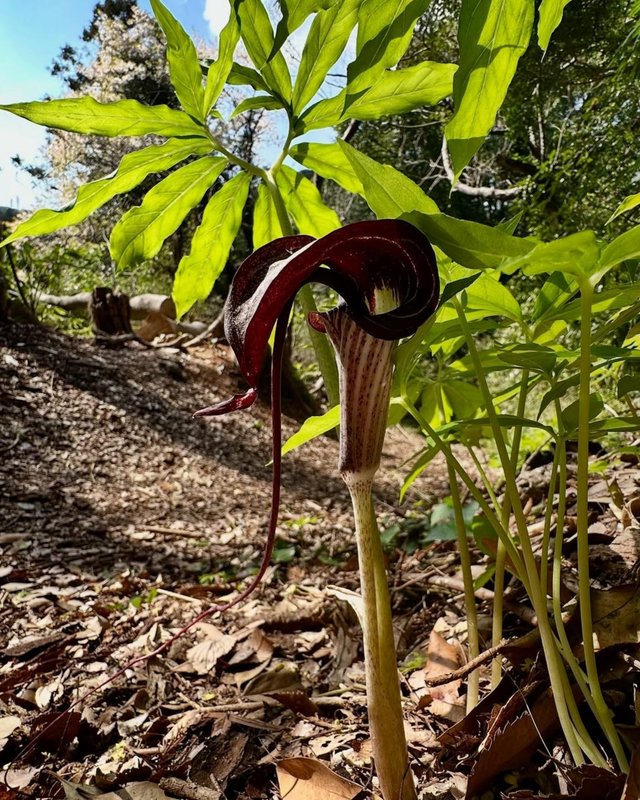Arisaema Serratum So Beautiful Flower
The Mysterious Beauty of Arisaema serratum: Nature’s Hidden Gem
Deep in the shaded woodlands of East Asia, a mysterious and captivating plant quietly thrives — Arisaema serratum. Belonging to the Araceae family, this striking perennial is native to Japan and parts of Korea and China, where it occupies moist, forested slopes and ravines, shrouded in the cool shadows of towering trees. With its unusual form and somewhat eerie charm, Arisaema serratum is a plant that commands both intrigue and admiration.
Botanical Profile
Arisaema serratum is a member of the genus Arisaema, commonly known as cobra lilies or jack-in-the-pulpits. The species name “serratum” refers to the serrated edges of its leaves, which lend a slightly rugged look to the otherwise elegant foliage.
The plant typically grows to a height of 30–80 cm , and features a tall, sturdy stem that supports a pair of broad, divided leaves. But what truly sets A. serratum apart is its dramatic flower structure. The inflorescence is made up of a spathe — a modified leaf that wraps around the flower spike. The spathe of A. serratum is particularly striking: it’s often deep purple or green, sometimes striped, and curves like a hood or cobra ready to strike. Hidden within this hood is the spadix, which can vary in color and often extends like a tongue or whip.
Sexual Dynamism
One of the more fascinating aspects of Arisaema serratum is its ability to change sex. That’s right — this plant is sequentially hermaphroditic, meaning it can switch between male and female forms depending on environmental conditions and its own energy reserves. Younger or weaker plants are typically male, while mature, well-nourished plants develop female flowers. This adaptation maximizes reproductive success and adds to the plant's mystique.
Ecological Role and Habitat
In its native habitats, A. serratum thrives in dappled light and rich, moist soils, often in mountainous or hilly regions. It plays a subtle yet important role in forest ecosystems. While its pollinators aren’t always well-documented, it is believed to attract small flies and gnats, which are lured into the hood-like spathe, often becoming temporary prisoners — a strategy that ensures pollen transfer before their eventual release.
Interestingly, many Arisaema species, including A. serratum, contain calcium oxalate crystals, which can be irritating or toxic if ingested raw. This natural defense mechanism helps the plant deter herbivores, although some insect species have adapted to interact with it.



%20(10).jpeg)
I really like the natural beauty photography you have shown. You may not recognize these photos, but you like them. Thank you for presenting us with beautiful photos.